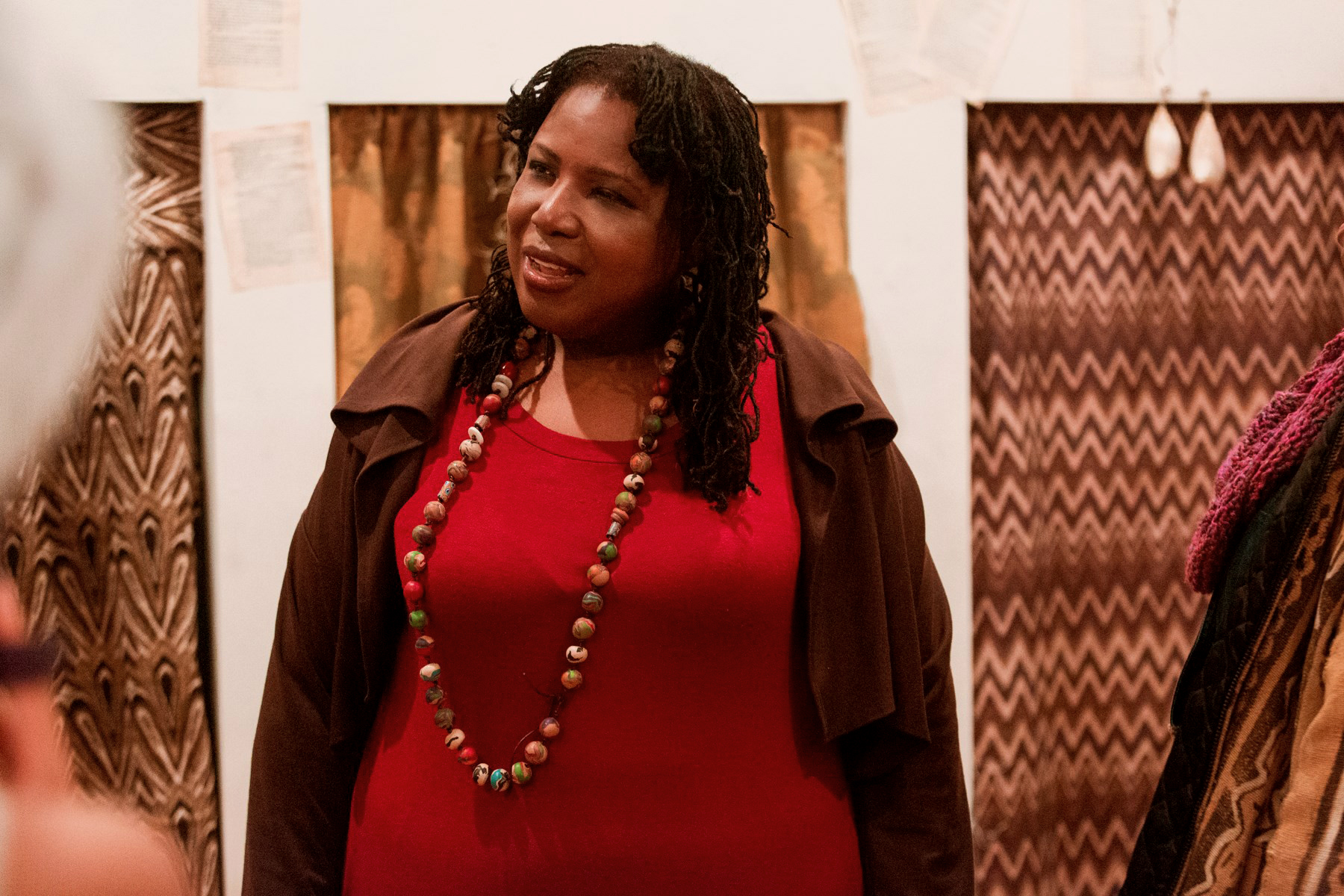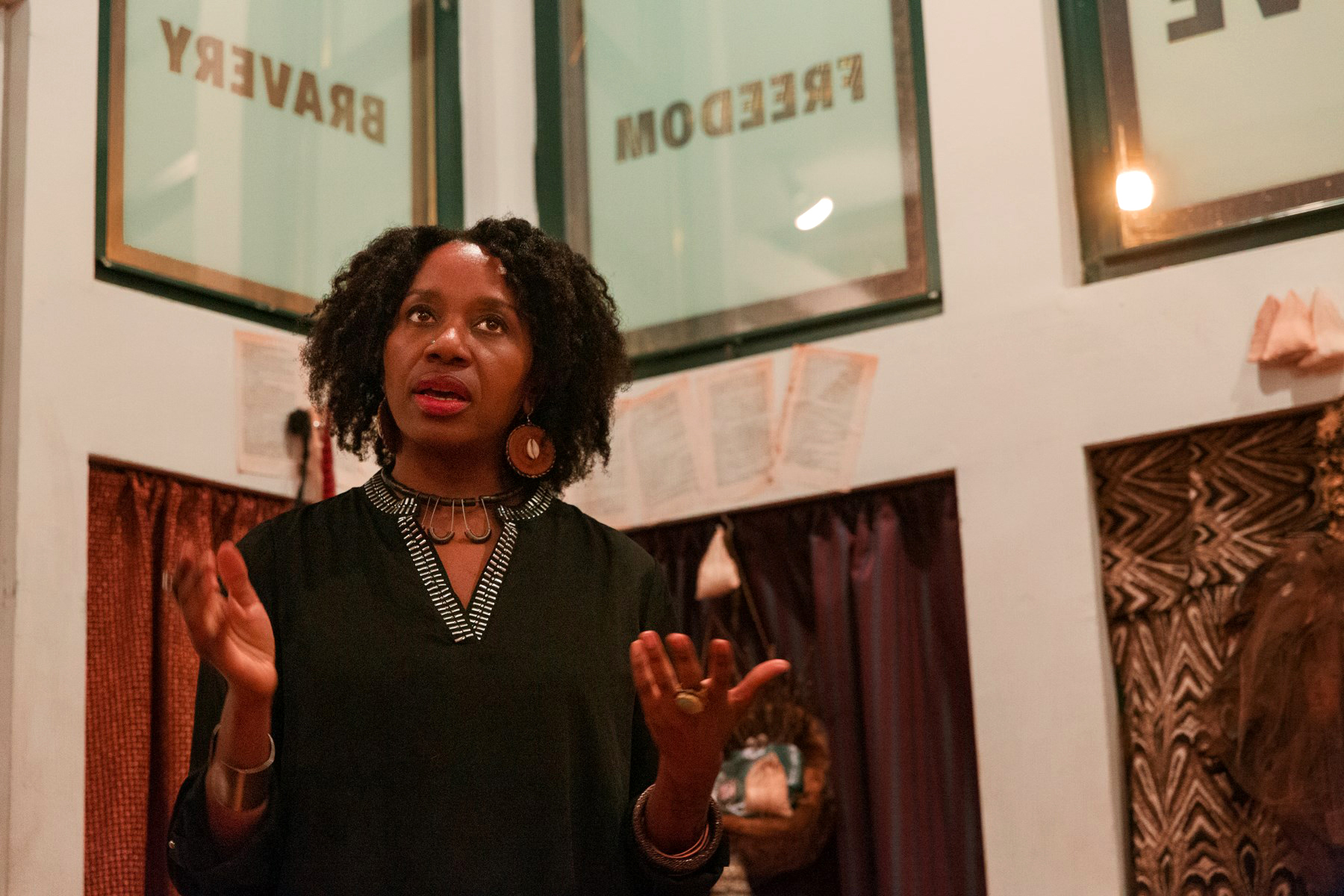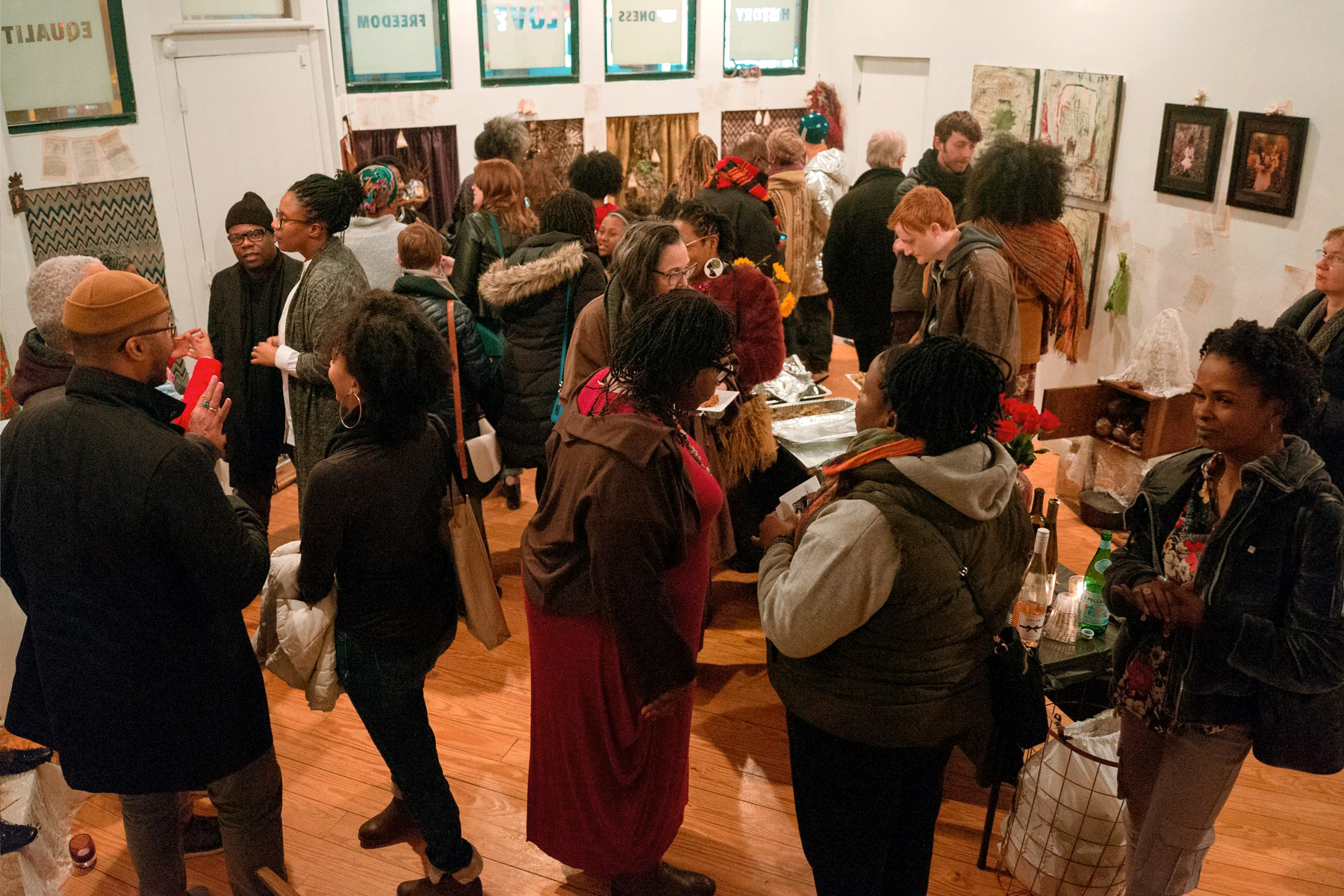On Friday the 13th, Rootwork Gallery, an arts space in east Pilsen, felt inviting and meditative as people arrived for the artists’ talk of “A Tender Power: A Black Womanist Visual Manifesto.” Soft music played as the founding curator of Rootwork, Tracie D. Hall, greeted attendees, answered questions, and served portions from an epic vegan lasagna to early arrivals.
The exhibition is a thoughtful reflection on both the contributions of Black women to society and their families, and the burdens that they bear moving through the world as Black women. Hall, who created several of the pieces on display, incorporated Black spiritual practices like the use of mojo bags to carry spells and send prayers into her work. Her friend and fellow artist, Kimberly M. Harmon, contributed the rest of the artwork, which deals more closely with her experiences with her family.
In the two years since Hall—a program director at the Joyce Foundation who previously served as an official with the city’s Department of Cultural Affairs and Special Events—founded Rootwork, the gallery has provided a platform for artists specializing in spiritual, folk, street, and indigenous art to showcase their work. It takes its name from the Black spiritual practice “rootwork,” also known as Hoodoo, which originated in West and Central Africa and mixed with Native American beliefs and traditions during slavery.

As part of the display of “A Tender Power,” the spaces between artworks were filled with candles and whole lemons, with bunches of collards hung on the walls to brighten the mood. Hall explained that the fruit and vegetable decorations were inspired by her family—especially her grandmother, who was active in rootwork while Hall grew up. She recalled New Year’s Eve at home, when people would kiss under collards instead of mistletoe, and explained the decision to include lemons: “[they] lift energy.” Said Hall, “I wanted to do that because some of the subject matter is really heavy, and I wanted people to come in here and balance the spirit and not be too sad or bereft.”
The artists’ grappling with painful and meaningful Black experiences sat at the core of the show’s most moving works. “Nkisi Suit for Mamie Till”—a black dress staked to the wall with dozens of nails, paired with a black handbag and black shoes also run through with nails––took up the gallery’s western wall. Pinned to the clothing were miniature portraits of Mamie Till, her son Emmett, and the famous photo of Till crying over her son’s casket.
The piece first appeared as a passive reflection on a mother’s grief and suffering––but Hall, who created the work, explained that a nkisi is an “oath taker” or an “order taker,” and to create one means that “you’re asking it to do something, you’re making a pact with it.” In this case, the nkisi was a call on Mamie Till to avenge Emmett’s death on his murderers in the afterlife.
The murder of Emmett and Mamie Till’s decision to hold an open casket funeral, which took place at the Roberts Temple of God in Christ Church in Bronzeville, played an important role in the beginning of the Civil Rights movement––but it also had a profound effect on Hall.“When I saw Emmett Till’s body, I was twelve. I was just reading JET [Magazine] like you do, and having a good old time,” she said. “I ran into the kitchen where my mother was and I said, ‘What is this?’… My mother told me the whole story in about ten minutes and I never forgot it. And that’s when I realized I don’t trust nobody with my Black life.”
Two of Harmon’s mixed media pieces, a pair of photographic portraits titled “Egun/Oya,” capture her daughter playing in the woods. In the Yoruba language, Egun and Oya refer to ancestors and the cycle of life, and while reflecting on the pieces, Harmon spoke of the inspiration found in the “not apologetic, not curtailed, rawness of power” she saw in her daughter.

The different manifestations and meanings of power were a theme that recurred throughout Hall and Harmon’s artists’ talk, which consisted of the women asking each other about their artwork and the way rootwork tied into their lives and their understanding of the world. Each woman answered the question of how she defined power; for Harmon, it is the ability to unapologetically speak her truth. To Hall, power is the capacity to overcome the challenges that life presents, “that moment when you collect everything that you have and begin to allow it to propel you beyond where you think you can go.”
Hall’s understanding of power is reflected in the gallery space she has cultivated over the past two years, which she envisions as an unpretentious place to share and flesh out ideas. Rootwork has been a place for people to share experiences and collectively process life’s challenges, a place that is understanding, warm, and supportive. At the artists’ talk, one could see just how passionate this community was: the number of attendees grew to over sixty as people continued to fill the folding chairs and pack every foot of space by the walls. Harmon thanked people for coming to the exhibition and giving energy through their presence and questions. Hall agreed, noting that often when the gallery closes there are new offerings at the altars, like food and candy and coins. Though she sees people going to all sorts of places and only taking, “people come here and they give.”
“A Tender Power: A Black Womanist Visual Manifesto.” Rootwork Gallery, 645 W. 18th. St. Open through May 18. facebook.com/rootworkgallery
Tammy Xu is a contributor to the Weekly. She grew up in Naperville and works as a software programmer. She last wrote for the Weekly about a new self-guided tourbook of South Side sites significant to the history of Black women this month.

